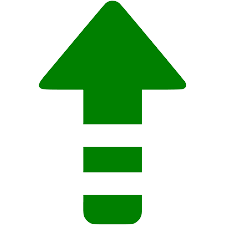

For lots of, even maximum people moderns, the central religious selection is a simple one: adhere to the realization system through which you grew up, or prevent adhering to it. However when you survey the variety of religions on this planet, the take a seatuation not turns out somewhat so binary; when you then upload the variety of religions that experience existed viaout human history, it begins glanceing downproper kaleidoscopic. Or fairly, it appears somefactor just like the faintly psychedelic but in addition information-rich Histomap of Religion above, created in 1943 by means of chemist John B. Sparks, whom we’ve previously featured right here on Open Culture for his original Histomap depicting 4,000 Years of Global History and his subsequent Histomap of Evolution.
The UsefulCharts video underneath explains Sparks’ Histomap of Religion intimately, however it additionally cites his Histomap of Evolution, an examinationple of ways his globalview fails to align with curhire consistent withceptions of those subjects. Even the brand newer Histomap of Religion is by means of now greater than 80 years outdated, during which period scholarsend in religion and related fields has made certain discoveries and clarifications that necessarily move unreflected in Sparks’ paintings. However when you endure this in thoughts whilst glanceing on the Histomap of Religion, you’ll nonetheless achieve a brand new and useful consistent withspective on how the ideals that mankind has held primeest have modified and intermingled over the millennia.
The chart starts in prehistory, dividing the then-extant faiths into the categories “magazineic and fetishism,” “tabu and totemism,” “ancestor worsend,” “tribal gods and divine kings,” “professionalpitiation of nature spirits,” and “fertility cults.” Despite the fact that Sparks’ information would possibly at the complete be “in line with theories concerning the origins of religion that have now been both rejected or a minimum of seriously revised,” explains UsefulCharts creator Matt Baker, “the general concepts expressed by means of those six varieties are nonetheless somewhat legitimate.” The expansion and contraction of adherence to a lot of these early religion via time are mirrored by means of adjustments within the width of the colored columns that repredespatched them. Follow those columns downward via history, and new, extra familiar religions emerge: Taoism, Judaism, Hinduism, Buddhism, Christianity each Catholic and Protestant.
Thereafter come other transferments and figures consistent withhaps now not immediately recognizin a position as religious in nature: “humanism,” for examinationple, whose representatives come with Shakespeare and Rousseau. Later, the information of Russian intellectuals Vissarion Belinsky and Alexander Herzen department off to develop into, after a couple of century, the “corrupt philosophy” of communism, with its “God-less professionalpaganda” supporting a “police state aimed toward global domination.” Baker gadgets that, if Sparks counts communism as a religion, then certainly he must depend capitalism as a religion as neatly. This can be a fair-enough level, despite the fact that behold this dense chart of “cults, faiths, and ethical philosophies” lengthy sufficient, and also you’ll begin to receivedder if eachfactor humanity has ever performed isn’t, in some sense, ultimately religious in nature.

Related content:
Animated Map Displays How the 5 Primary Religions Unfold Around the Global (3000 BC — 2000 AD)
The Tree of Languages Illustrated in a Giant, Beautiful Datagraphic
Joseph Priestley Visualizes History & Nice Historical Figures with Two of the Maximum Influential Datagraphics Ever (1769)
4000 Years of History Disperformed in a 5‑Foot-Lengthy “Histomap” (Early Datagraphic) From 1931
10 Million Years of Evolution Visualized in an Elegant, 5‑Foot Lengthy Datagraphic from 1931
Primarily based in Seoul, Colin Marshall writes and vastcasts on towns, language, and culture. His tasks come with the Substack newsletter Books on Towns, the e book The Statemuch less Town: a Stroll via Twenty first-Century Los Angeles and the video sequence The Town in Cinema. Follow him on Twitter at @colinmarshall or on Facee book.





